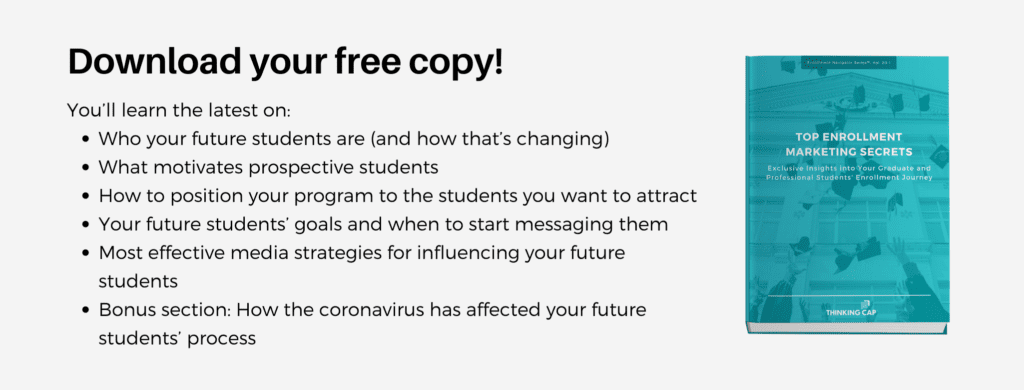| Major Updates
Biden Administration Introduces FY 2022 Discretionary Budget, American Jobs Plan and American Families Plan
Presidential budget requests are generally a wish list and a signal of their future legislative priorities. Because discretionary spending is not able to be passed via reconciliation process, it would need 60 votes and bipartisan support in the Senate, making the proposed budget largely dead on arrival. Similarly, the American Jobs Plan and American Families Act both have their own hurdles to clear, and it is unclear whether Democrats can utilize the reconciliation process to pass them both with a 51-vote majority in the Senate. However, the signals are clear: the Biden Administration wants to go big and go bold, and its education proposals are consequential. An additional two years of preschool and two years of community college would make the K-12 public education system expand to provide four additional years of free schooling to all Americans. The focus on massive infrastructure expansion, especially broadband access, would have broad implications for online education, creating better connections at brick and mortar universities around the country. Over the coming weeks, we’ll see a clearer view of what legislators believe can pass, and we’ll update you on what shakes out. |
| Democrats Introduce Significant Higher Education Bills
All of the activity by the Administration is being met in both congressional chambers with members’ own ideas for education reform, including the following bills.
Get involved and weigh in! All citizens are able to reach out to their members of Congress and the White House with input on these bills, and we encourage you to do so. Be careful when reaching out if you are using your institutional/organizational name with the request, as you’d likely need to work with your institution’s government affairs or President’s office. Find out who your representatives in Congress are here and let them know your thoughts.
Other News
|
The Fourth Digital Learning Pulse Survey, Conducted by Bay View Analytics on Behalf of Cengage and Online Learning Partners, Evaluates How Higher Education is Changing in the Wake of COVID-19
BOSTON—April 28, 2021 —The higher education industry navigated many challenges over the last year, including the transition to online learning. As students, faculty and administrators reflect on the last year, the majority actually give pandemic learning a decent grade. In fact, more students gave pandemic learning an “A” grade, while more faculty and administrators gave it a “B” grade, according to the fourth and final installment of the Digital Learning Pulse Survey, a four-part series to better understand the needs of colleges during COVID-19.
The survey of 1,486 students and 1,286 faculty and administrators across 856 institutions was conducted by Bay View Analytics on behalf of the Online Learning Consortium (OLC), WCET (the WICHE Cooperative for Educational Technologies), University Professional and Continuing Education Association (UPCEA), Canadian Digital Learning Research Association (CDLRA) and primary partner and underwriter Cengage, a global education technology company.
“Digital learning was already growing, and the pandemic greatly accelerated that. It also increased everyone’s comfort level and capability with online learning and digital tools,” said Fernando Bleichmar, Executive Vice President and General Manager for U.S. Higher Education at Cengage. “Students continue to face pressures and are questioning the value of higher education, but they clearly see the benefits and flexibility that digital learning can offer. Now colleges and universities need to find an affordable way to meet students where they are in their journey.”
Key takeaways from the survey include:
- Students, faculty and administrators are aligned on key student challenges, differ on institutional support: Students, faculty and administrators all agreed that “stress,” “level of motivation,” and “having time to do coursework” were students’ top challenges this spring, though students saw institutional support (or lack thereof) as a bigger problem than faculty or administrators.
- More students give pandemic learning an “A” grade compared to faculty or administrators: Students, faculty and administrators graded how well their courses met education needs during Fall 2020 and Spring 2021, with more students giving As, and more faculty and admins giving Bs:
- Fall 2020:
- “A” Grade – 43 percent of Students; 36 percent of Faculty; 18 percent of Admins
- “B” Grade – 30 percent of Students; 45 percent of Faculty; 56 percent of Admins
- “C” Grade – 16 percent of Students; 18 percent of Faculty; 23 percent of Admins
- Spring 2021:
- “A” Grade – 47 percent of Students; 43 percent of Faculty; 25 percent of Admins
- “B” Grade – 29 percent of Students; 46 percent of Faculty; 56 percent of Admins
- “C” Grade – 13 percent of Students; 10 percent of Faculty; 16 percent of Admins
- Students more positive about online learning: The majority of students are more optimistic today than pre-pandemic about online learning (57 percent) and digital materials (52 percent). Nearly half of students (48 percent) are more optimistic about hybrid courses.
- Students more likely to want some courses delivered fully-online post-pandemic, and preferences differ across format and respondent group.
- Preference for some courses to be fully-online:
- 46 percent of students strongly agree; 27 percent somewhat agree
- 32 percent of faculty strongly agree; 21 percent somewhat agree
- 15 percent of admins strongly agree; 25 percent somewhat agree
- Preference for some courses in hybrid format:
- 33 percent of students strongly agree; 35 percent somewhat agree
- 30 percent of faculty strong agree; 27 percent somewhat agree
- 25 percent of admins strongly agree; 37 percent somewhat agree
“These results will be reassuring for faculty and administrators,” said Dr. Jeff Seaman, lead researcher and Director of Bay View Analytics. “Their concern for student well-being and the quality of their education was very evident in our previous surveys, and it’s clear from the students’ responses that they valued this effort, and thought it was largely successful.”
“Student perspectives regarding their preferences and perceptions of quality are critical as we plan strategically for helping faculty leverage the professional development they’ve received in the past year,” said Angela Gunder, Chief Academic Officer of OLC. “Blended learning pedagogical practices are well poised to help bridge the gap between student access and success, and we’re re-imagining programming and resources that position faculty and staff to thrive in this space.”
“Some have worried that the remote learning experiences offered during the pandemic would negatively reflect on courses that are online by design. These results seem to contradict our assumptions based on anecdotal information. When ¾ of students and more than half of faculty want to experience at least some courses fully online, the key takeaway is that the pandemic did not threaten but in fact accelerated the long-term growth, acceptance, and desirability of online learning, and those numbers will only improve, as emergency remote offerings are rebuilt as modern online courses and programs,” said Robert Hansen, Chief Executive Officer of UPCEA.
“The students surveyed understand and appreciate the value of their online learning experience,” said Russ Poulin, Executive Director of WCET. “This is encouraging considering that many of them were actually involved in an emergency ‘remote’ experience in a class not designed to be offered in that format. In the future, those students will greatly appreciate taking online courses from faculty prepared to teach in the modality with curriculum designed to maximize learning at a distance.”
Survey findings will be presented in a free webinar “One Year Later – Higher Education Students, Faculty, and Institutions Reflect on Digital Learning” today, Wednesday, April 28 at 2:00 pm ET. The webinar will feature a discussion with lead researcher Jeff Seaman of Bay View Analytics; Jennifer Mathes of OLC; Dr. Bernard Polnariev, Union County College Associate VP for Academic Affairs and Dean of the Scotch Plains Campus; and Nia Williams, an Ivy Tech Community College student. Click here to register for the webinar or to receive the recording.
For complete survey results and to download the infographic visit: www.cengage.com/digital-learning-pulse-survey.
Methodology
The survey of higher education students, faculty and administrators to understand institutions’ use of digital materials and views on online learning was conducted between March 30 – April 12 by Bay View Analytics in partnership with four leading online learning organizations and underwritten by Cengage.
About Bay View Analytics
Bay View Analytics is a statistical research firm with a focus on survey design, implementation, and analysis. Formerly known as the Babson Survey Research Group, the scope of Bay View Analytics’ consulting engagements includes scientific statistical analyses, clinical trial statistics, and survey designs for a range of topics, with a particular focus on online education. Bay View Analytics has been conducting research and publishing annual reports on the state of online education in U.S. higher education for thirteen years. Visit https://bayviewanalytics.com for more information.
About Cengage
Cengage, a global education technology company serving millions of learners, provides quality digital products and services, equipping students with the skills and competencies needed to advance their careers and improve their lives. We serve the K-12, higher education, professional, library, English language teaching and workforce training markets worldwide. Our industry-leading products and services make education more accessible and affordable, including Cengage Unlimited, the first-of-its-kind all-access digital subscription service. Visit us at www.cengage.com or find us on LinkedIn, Facebook or Twitter.
About WCET
WCET – the WICHE Cooperative for Educational Technologies, is the leader in the practice, policy, & advocacy of digital learning in higher education. WCET is a member-driven non-profit which brings together colleges, universities, higher education organizations, and companies to collectively improve the quality and reach of technology-enhanced learning programs. Learn more at https://wcet.wiche.edu/.
About UPCEA
UPCEA is the association for professional, continuing, and online education. Founded in 1915, the association serves its members with innovative conferences and specialty seminars, research and benchmarking information, professional networking opportunities and timely publications. Based in Washington, D.C., UPCEA builds greater awareness of the vital link between adult learners and non-traditional learners and public policy issues. Visit www.upcea.edu.
About CDLRA
The mission of the Canadian Digital Learning Research Association (CDLRA) is to measure the evolution of digital learning at publicly funded post-secondary institutions in Canada and to assess its impact on employment, skills development and digital competencies across the country. Learn more at http://www.cdlra-acrfl.ca/.
About Online Learning Consortium
The Online Learning Consortium (OLC) is a collaborative community of education leaders and innovators, dedicated to advancing quality digital teaching and learning experiences designed to reach and engage the modern learner – anyone, anywhere, anytime. OLC inspires innovation and quality through an extensive set of resources, including, best-practice publications, quality benchmarking, leading-edge instruction, community-driven conferences, practitioner-based and empirical research and expert guidance. The growing OLC community includes faculty members, administrators, trainers, instructional designers, and other learning professionals, as well as educational institutions, professional societies and corporate enterprises. Visit http://onlinelearningconsortium.org for more information.
###
Media Contact:
Kristina Massari, Cengage
(203) 965-8694; [email protected]
When colleges switched to emergency remote instruction last year, some online learning advocates feared the hasty transition would leave students with a negative impression of online learning. While more pre-pandemic online courses resulted from months of careful planning and significant financial investment, few instructors enjoyed these luxuries last spring.
Despite the challenges and shortcomings of this emergency transition to remote instruction, a majority of students want the option to keep studying online, according to new survey results.
The Digital Learning Pulse survey, published today, is the fourth in a series of surveys published by Bay View Analytics in partnership with Cengage, the Online Learning Consortium, the WICHE Cooperative for Educational Technologies, the Canadian Digital Learning Research Association and the University Professional and Continuing Education Association. Read the full article here.
Learning before the 21st century was mostly about accessing and retaining theories, facts and figures; now it is mostly about applying theories, facts and figures in creative and critical ways to solve problems and advance society.
Increasingly, higher education is less about memorization and more about problem solving. In years gone by, access to facts and viewpoints often involved the purchase or acquisition of books. Huge personal libraries were assembled by the well-educated wealthy in prior centuries. Now we all have access to the immense electronic library that we call the internet. As Julien Barbier points out, “The assumption of 19th century education was that building a student’s knowledge base is everything. But, today, with the biggest library that has ever existed at everyone’s fingertips (the internet), skills are what matter. The OS of education approach shifts 90% to 95% of a typical student’s time to applied learning. Content is not the problem. Learning how to learn is the future of education.”
Increasingly, college students have been found to be living on the outer edge of their finances. For many, food insecurity is a reality and housing is not regularly available, and the American Psychological Association has discussed how basic needs for college students are not being met:
A study of 43,000 students at 31 community colleges and 35 four-year universities in 20 states and Washington, D.C. found that 36% of college students are food insecure, and 36% are in precarious housing situations. The lead author of this report told National Public Radio, “It really undermines [college students’] ability to do well in school. Their grades suffer, their test scores appear to be lower, and overall, their chances of graduating are slimmer. They can barely escape their conditions of poverty long enough to complete their degrees.”
Yet, in far too many cases, we are still requiring very expensive textbooks in our classes. Over the degree program, students are expending thousands of dollars for texts that many sell back to the bookstore for less than half of their original value. Much of the material embedded in the texts is either already available freely online or could be assembled by the instructor from open-access sources. At the same time, many instructors still complain that the text does not precisely fit their needs; they skip chapters and assign additional readings to update the material in the text that is already one or two years out of date before the book hits the students’ desks. Why not just create your own texts and update them as often as is needed?
During the first three semesters in COVID times, awareness of open educational resources (OER) has surged among faculty members. Faculty members who put their classes online through remote learning discovered more fully the range and timeliness of relevant materials that are available online. In a study by Bay View Analytics, sponsored by the William and Flora Hewitt Foundation, it was found that faculty who adopted OER rated their materials superior to the commercial alternatives, and while the percentage of required OER materials did not increase, the percentage of supplemental OER materials did.
Development of OER materials is often supported by colleges and universities as one way to make their classes more affordable. Foundations also provide funding to assist in reimbursing the time and other expenses incurred in development of the materials. This can make a huge difference to students who are living on the edge of poverty while attending college. A Edmonton Journal opinion piece recently made the case for how OER makes college more affordable: “Connor Braun, a student at the University of Calgary, tells of the impact that OER can have. ‘A $200 textbook on its own can be a huge hurdle, but when you’re taking five, maybe six, classes, the cost of textbooks gets ludicrous. For people who are already struggling, free alternatives like OER can make a real difference.’”
Over all, many students seem to do better in classes where the textbooks are open. It may not be that the OER materials are superior — rather it may be that when the class materials are free, students actually obtain and use them. The research is alarming: “A 2017 survey of 1,000 current students, conducted by Wakefield Research in the United States and Canada, found that nearly 40 percent have avoided purchasing course materials for at least one of their classes. And a widely cited 2014 report called ‘Fixing the Broken Textbook Market’ by the United States Public Interest Research Group (PIRG), was even more damning. It included a survey of 2,000 students, on 150 campuses, and found that 65 percent of students had decided to forgo at least one textbook purchase.” If half the students in the class do not have a textbook, the instructor and students are both put in a disadvantageous position in creating a thriving learning community. Opening free access to all can make a huge difference in the success of the class.
C. Edward Watson, CIO and associate vice president for curricular and pedagogical innovation at the Association of American Colleges and Universities, and co-author Barbara Illowsky describe their “epiphany” in discovering the meaningfulness and impact on equity and affordability of using OER. “Yet one of the best-kept secrets for improving student equity and college affordability is within the hands of faculty: using Open Educational Resources (OER) in their courses instead of commercial textbooks and paid electronic materials.”
A host of guides are available to assist faculty members in developing OER materials for their classes. A couple of examples are from the University of Texas and the University of South Carolina. Resources are easy to find, with many libraries providing open creation collections. With more than one and a half billion open works licensed, Creative Commons provides tools to assist in searching for relevant open materials.
Over the past few years, I have been chronicling the new initiatives, programs and activities daily in the UIS OER blog. There are an amazing number of initiatives across the country and around the world that are supporting the opening of educational resources for the sake of affordability and access.
Is it time for you to make a commitment to your students, your institution and your colleagues that you will identify and/or create open educational materials in your classes? I encourage you to do so for the sake of ensuring that your students can afford all of the class materials that you expect them to have for success in your classes.
This article was originally published in Inside Higher Ed’s Transforming Teaching & Learning blog.
Financial sustainability is the biggest existential threat facing higher education today. In the United Kingdom, the universities in deficit have almost quintupled in the last five years, from 24 in 2015/16 to 119 in 2018/19. The COVID-19 pandemic has exacerbated this challenge, with London Economics predicting that universities will be hit by a $3bn shortfall this academic year.
In collaboration with HackerU and Emerge Education, Jisc has released a report charting how universities can enhance revenue diversification, by using technology to its best potential. The report shares technology-enabled revenue diversification strategies, and what organizations need to do to make them work. We hope that this report will stimulate thought and debate, and help prepare your university as we move into the post-pandemic world.
About HackerU
With over a decade of experience as Israel’s premier, digital skills and cybersecurity education provider, HackerU partners with top-tier academic institutions to offer advanced workforce and professional development programs in digital technology. HackerU’s dedicated Research and Development team ensures all digital and cyber curricula remain relevant to current industry standards and aids students in developing the skillsets they need to acquire life-long careers in the digital workforce. Academic partners capitalize on HackerU’s turnkey programs complete with instructor recruitment and training, comprehensive career assistance, marketing strategy and execution, and customized student success monitoring and reporting.
Our Mission
HackerU’s overarching mission is to transform diverse groups of global learners from a variety of socioeconomic backgrounds and build the world’s Cyber and Digital workforces. Join us as we help close the digital skills gap and prepare learners for jobs of the future.
Dublin, April 08, 2021 (GLOBE NEWSWIRE) — The “Digital Badges Market – Growth, Trends, COVID-19 Impact, and Forecasts (2021 – 2026)” report has been added to ResearchAndMarkets.com’s offering.
The digital badges market is expected to register a CAGR of 22.5% during the forecast period (2021 – 2026). A Digital Badge signifies the accomplishments or skills for its holder and these accomplishments and skills can be displayed, accessed, and verified online.
Digital badges are graphical representations of traditional qualifications (certificates and diplomas) but contain blockchain verified metadata that describe the qualification and the process required to earn them. Unlike traditional qualifications, they can neither be copied nor tampered with, and can be easily shared online.
Such badges can be earned in various environments, including online platforms where the number is increasing. According to a 2018 report by the University Professional and Continuing Education Association (UPCEA), one in five institutions now offer digital badges. Read the full story here.
I’m pleased to inform you of a special offer for our institutional members, in thanks for your loyalty and commitment to UPCEA during the pandemic.
Our new professional development courses and certificates have been enthusiastically endorsed by participants. Students have appreciated the opportunity to learn from leaders in the profession, network with colleagues across the field, and engage both asynchronously and in weekly live classes. We’d like to offer you and your colleagues a complimentary opportunity to join us for this dynamic series, even in the face of frozen or restricted budgets.
Each member institution will be eligible for two complimentary enrollments, one for each of the following PCO Pro courses offered this June:
- The Nature of American Higher Education (Foundations Series), Faculty Member: Jay Halfond, Professor of the Practice Emeritus, Boston University
- Overview of Professional, Continuing, and Online Education (PCO) (Foundations Series), Faculty Member: David Schejbal, President, Excelsior College
Because we know this opportunity will be popular, we have developed a special model just for these two offerings—courses will be taught by members of our Founding Faculty, with small breakout sections facilitated by experienced practitioners committed to shared learning and discovery.
In order to be eligible for this offer, you must receive approval from your Institutional Representative to UPCEA, acknowledge that you are requesting one of two spots available to your institution, and be a first-time enrollee in UPCEA’s Online Professional Development Programs. Fill out this form to apply. If you do not know who your Institutional Representative is, please email [email protected]. Eligible students will receive a promotional code to register. Please submit the form by Friday, April 30, 2021.
If you have questions about this offer or UPCEA’s Online Professional Development Programs, contact Patrick Flanigan at [email protected].
We’re happy to extend this exclusive opportunity to our members. Thank you for your membership and support.
Employers are seeking graduates with both hard and soft skills that enable them to be effective employees on day one. Are we documenting those skills for our grads?
Increasingly, higher education is placed in the position of updating and upgrading the curriculum to assure that students are prepared for the careers of today — not those of yesterday or those careers that will never materialize due to the impact of artificial intelligence, shifting societal needs and the changing economy of the Fourth Industrial Revolution (4IR). The advent of 4IR will bring the “blurring of boundaries between the physical, digital, and biological worlds. It’s a fusion of advances in artificial intelligence (AI), robotics, the Internet of Things (IoT), 3D printing, genetic engineering, quantum computing, and other technologies. It’s the collective force behind many products and services that are fast becoming indispensable to modern life.”
When you hear about AI and robotics, you might think of automated assembly lines and smart machines that take the jobs of blue-collar workers requiring less education. But 4IR is not about your grandfather’s AI. It is about algorithms taking on accounting, legal and managerial tasks. It is about displacing baccalaureate and graduate degree holders in the roles for which our curricula have been designed.
The key initial step in the process is to engage employers with educators to determine the skills and abilities that are needed today and in the next few years. LinkedIn’s 2020 list of skills in most demand includes these soft skills at the very top:
- Creativity
- Persuasion
- Collaboration
- Adaptability
And these hard skills at the very top:
- Blockchain
- Cloud computing
- Analytical reasoning
- Artificial intelligence
Of course, these are further refined, discipline by discipline as industries and fields move to require differing skills, abilities and credentials over time. A good practice is for departments to create employer advisory councils to assist in identifying the needs for graduates in each discipline. These councils should include the array of employers — commercial, noncommercial, governmental and organizational — that are representative of the field of study. In the case of each department, a list of required or desired knowledge, competencies, skills and credentials should be developed and revisited often. These should be incorporated into regularly updated learning outcomes for the degree.
Best practices are being developed for how to best create credentials that recognize and document the achievement of competency in a given area. The University Professional and Continuing Education Association (UPCEA) has just released the “Hallmarks of Excellence in Credential Innovation” that explores the emerging best practices and considerations for effective and efficient credentialing.
Employers have become increasingly impatient with the slow rollout of relevant credentials from universities that recognize the new competencies and abilities needed. Google recently announced a massive effort in creating an array of new career certificates. Deployed through Coursera, no college degree is required for career certificates in IT support, project management, data analytics, associate Android developer and user experience design. Google has lined up 130 major employers who promise to hire those who successfully complete one of the certifications in the program. The programs last between three and six months and cost only $240. Google is also offering 100,000 need-based scholarships.
Clearly, the pressure is on for universities to respond. Failure to adequately prepare students for the current job market will result in accelerating the steady decline in enrollments that we have seen over the past decade.
There are a range of university options now — from informal or formal certificates; certifications, degrees and licenses to document achievement of knowledge; skills or competencies. Workcred has a useful chart of the differences among these categories. A Lumina grant enabled UPCEA, APLU, USU and Workcred to investigate the future of aligning and embedding industry credentials into baccalaureate degrees. This pathway provides a blueprint for the future. Further steps have been taken independently by universities that are utilizing blockchain technology to disseminate transcripts containing rich detail and documentation not available in the traditional paper document.
Yet much remains to be done if higher education, as a whole, is to engage in the development of an infrastructure aligned to industry needs. Experimentation must begin now, even as we are losing hundreds of thousands of prospective students to industry-initiated programs such as the Google career certificates. The process to pilot programs must be focused, easily assessed and open to modifications as it expands. A modest approach might follow these direct steps:
- Form an industry council at the academic departmental level
- With advice from the council identify the key skills, proficiencies or abilities desired in grads holding specific degrees
- Select among these competencies to add to the learning outcomes of the degree curriculum through required classes
- Award a badge to each student for each attribute when they are successfully assessed
- Promote support of the badges throughout the university and encourage students to use their badges in their social media and on their résumés
- Assess the success through surveys of students, graduates and employers
Who, at your university, is taking leadership in developing the documentation of relevant skills, proficiencies, knowledge and abilities among your students? Are you ensuring that your students are graduating with what is necessary for their career success in the emerging 4IR context of today and tomorrow, rather than the outdated, unnecessary and expired needs of the first two decades of this 21st century?
This article was originally published in Inside Higher Ed’s Transforming Teaching & Learning blog.
Your future continuing education students already exist — researching and searching for your programs right now. So how can you effectively tap into the continuing education market and recruit new students for your programs?

Who are your future students?
According to research from Thinking Cap Agency, professional certification students are an average of 31 years old (with a third over the age of 35) and two-thirds are women. Those who are seeking professional certificates also come in with work experience, as generally they are seeking a specific degree to further their skill sets and knowledge.
What motivates your future students to enroll in continuing education programs?
Our research has found that 70% of adult learners start looking into education options about a year before they enroll. Prospective students in accounting, the arts, computer science, or health sciences start looking into their education options six months in advance, while those in architecture, engineering, business, and journalism start looking between one and two years in advance. Schools should promote their programs well in advance of program start dates.
One of the most important areas to understand are the triggers that motivate prospective students to advance their education. Major life changes like new jobs (or loss of one), relocation or family changes often result in people to re-evaluate their path.
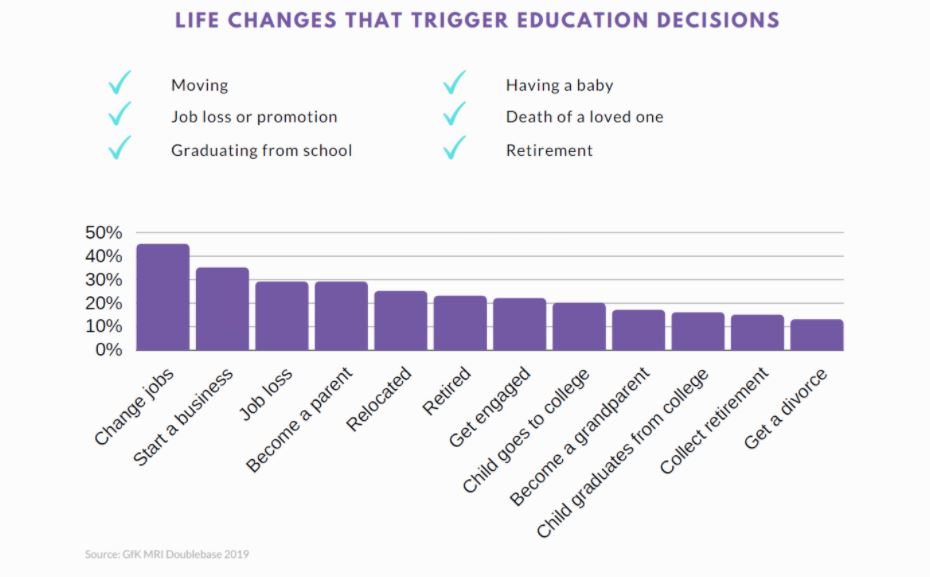
Here are a few strategies to effectively influence your future professional certification students.
1. Make sure your website answers adult learners’ questions
Your website is usually the first place prospective students are introduced to your school so you should be continually optimizing site content. Ensuring that your website’s copy and content reflects students’ search queries is also a key pillar of an SEO for higher education strategy.
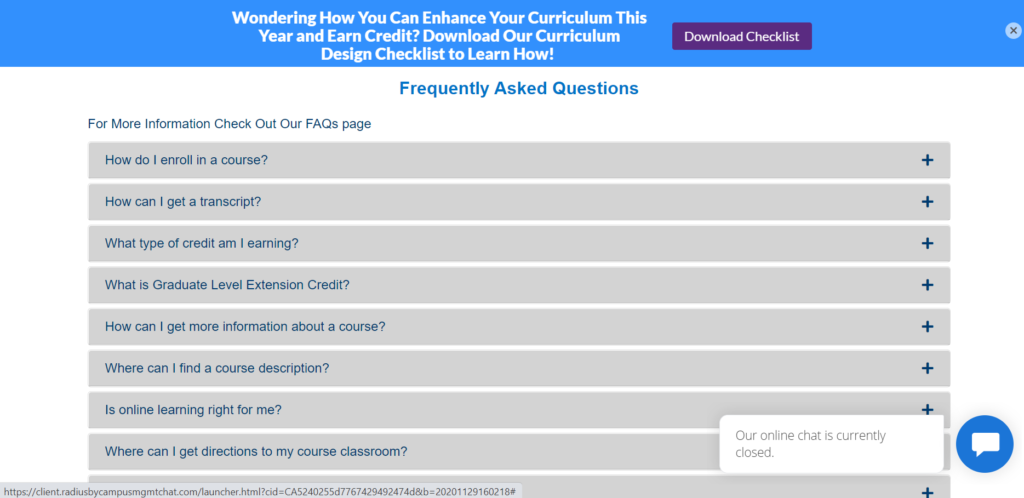
2. Get creative on social media
Adult learners are using social media to get to know your school’s culture, offerings, recruitment process, and their takeaways will help them understand their overall fit with your school. Our research found that professional education students trust social media the most when it comes to researching your institution — more than print materials, tours, and third-party higher education publishers.
3. Highlight real-world application and emerging technology
When recruiting adult learners, emphasize the relevancy of your programs. Practical and results-oriented adult learners want to see clear connection between the covered material and real-world application.
4. Offer and communicate flexibility
Offering part-time, weekend, or night courses helps to attract adult students that have additional personal or work obligations. And offering online courses, if possible for your programs, allows students to learn from wherever they might be living and take courses they may otherwise not have been able to access.
5. Create landing pages for each individual program
Each website landing page needs to position your program based on the student persona for the program, provide all relevant information, answer prospective students’ questions, and be optimized for SEO. Make sure each page is driving quality web traffic from students researching your programs.
Example: UCLA
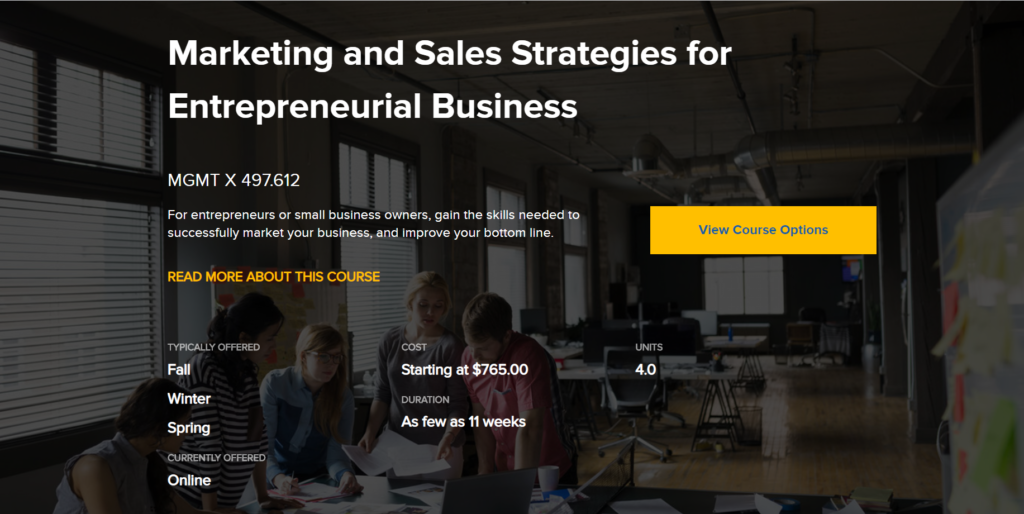
6. Put yourself where your prospective students are
The range of continuing education courses is broad — so effectively advertising yours has everything to do with identifying your specific student niche and showing up where they are. Find the social media, forums, websites, publications, and industry-specific channels that your prospective students are reading and advertise there.
7. Use data to your advantage
Effectively utilizing the wealth of data available about your prospective students is the key to creating and optimizing a recruitment strategy that drives student leads and increases enrollments.
Want to learn more about how to recruit your future students? Download our free ebook full of cutting-edge research.
About Tim Gerstmyer, President of Thinking Cap Agency
At Thinking Cap Agency, we leverage our proprietary research on exactly what makes your future students tick — who they are, where they are, and what motivates them. As the leading data-driven enrollment marketing agency for higher education, we can turn your prospective students into your future students.
What has changed for you in the last year?
For the team at MindMax, almost everything has. Since March 2020, our company has shifted to an entirely remote workforce, helped our university partners pivot their marketing and enrollment strategies to meet the evolving needs of their current and future students, and overall, we’ve spent a lot of time adjusting to a new normal.
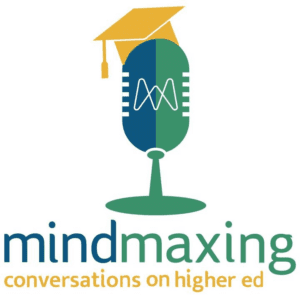 That new normal is the first subject we’re digging into in our podcast, MindMaxing. Through conversations with leaders in higher education, we’re digging into the impact COVID-19 has had on colleges and universities across the country.
That new normal is the first subject we’re digging into in our podcast, MindMaxing. Through conversations with leaders in higher education, we’re digging into the impact COVID-19 has had on colleges and universities across the country.
You’re invited to watch or listen to our first five episodes as we continue these conversations with our higher ed colleagues. Subscribe to our blog to receive new episodes in your inbox and find MindMaxing wherever you listen to podcasts.
MindMax is a valued UPCEA partner, providing a variety of enrollment services for colleges and universities across the country. To learn how MindMax can help you reach your enrollment goals, visit the MindMax website or reach out to CEO Lee Maxey.

